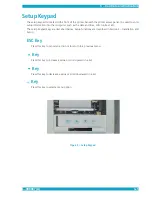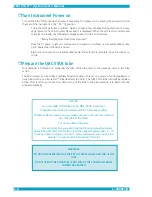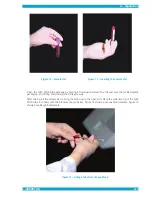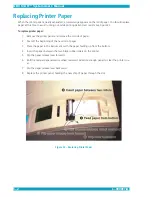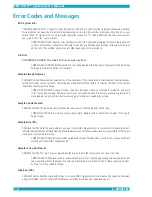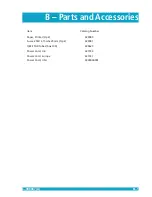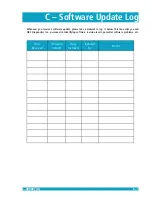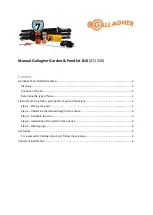
L–000867(A)
5–3
5 – Performance and Limitations
Parameter
Cor-
relation
Coeffi -
cient
Slope
Inter-
cept
QBC
Mean
Cell
Counter
Mean
Range of
Values
Number
of Sam-
ples
0.983
0.973
2.572
36.5
34.8
15.7
– 61.7
646
Hemoglobin (g/dL)
0.984
0.982
0.387
12.1
12.0
5.2
– 18.5
638
Platelet (x 10
9
/L)
0.962
0.935
17.701
244
242
23 – 913
558
WBC (x 10
9
/L)
0.974
1.124
–0.936
10.4
10.1
1.6
– 92.9
535
Granulocyte (x
10
9
/L)
0.972
0.991
0.152
7.0
7.0
0.8
– 45.0
535
Lymph/Mono
(x10
9
/L)
0.987
1.206
–0.419
3.3
3.1
0.8
– 89.9
535
The hematocrit results shown above refl ect the calibration methods of the Coulter or Sysmex analyzers used in the correlation
study. The QBC STAR software has been calibrated to match the international reference standard for microhematocrit (MHCT)
technology. The data shown in the table below were obtained by comparing the QBC STAR results against the microhematocrit
reference method.
12
Interfering Substances
• Hemolysis: Do not perform tests on visibly hemolyzed blood specimens.
• Bilirubin: No effects on test results have been observed at bilirubin concentrations up to 20 mg/dL.
8
• Triglycerides: No effects on test results have been observed at triglyceride concentrations up to 1,800 mg/dL.
8
• Coumadin: Anticoagulant therapy has been shown to have no clinically signifi cant effect on performance.
8
• Doxorubicin: Treatment with the anthracyclic drug Doxorubicin does not appear to interfere with the QBC test
method.
8
• Other Drugs: The effects of other potentially interfering drugs and their metabolites on QBC tests have not been
established.
9, 10
Parameter
Correlation
Coeffi cient
Slope
Intercept
QBC
Mean
Cell
Counter
Mean
Range of
Values
Number of
Samples
Microhematocrit
(%)
0.986
1.023
–0.650
36.5
36.3
15.7
– 61.9
646
* Products of Coulter Electronics, Hialeah, FL and TOA Medical Electronics, Kyoto, Japan.

